

April 2 – 8: “How do you scour your manuscript?”
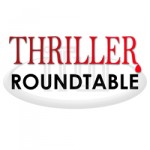 Spring has sprung…somewhere… In the spirit of “spring cleaning,” how do you scour your manuscript? This week we’re joined by ITW Members L. J. Martin, Michael Bradley, Michael Kardos, James M. Jackson, Max Karpov, Elena Hartwell, Ann Parker, Robert Black Whitehill, T. G. Wolff, Peter Beck, Lee Goldberg and Martin Roy Hill as they discuss the revision and manuscript “cleaning” process. Scroll down to the “comments” section – you won’t want to miss what they have to say!
Spring has sprung…somewhere… In the spirit of “spring cleaning,” how do you scour your manuscript? This week we’re joined by ITW Members L. J. Martin, Michael Bradley, Michael Kardos, James M. Jackson, Max Karpov, Elena Hartwell, Ann Parker, Robert Black Whitehill, T. G. Wolff, Peter Beck, Lee Goldberg and Martin Roy Hill as they discuss the revision and manuscript “cleaning” process. Scroll down to the “comments” section – you won’t want to miss what they have to say!
 L. J. Martin is the author of over 45 book-length works (westerns, historicals, mysteries, thrillers, and non-fiction), and has written a number of screenplays, one of which optioned by a major NBC approved producer, one of which is currently under option to an Independent. L. J. has a number of series, both western and crime. The Repairman series is now 9 novels deep.
L. J. Martin is the author of over 45 book-length works (westerns, historicals, mysteries, thrillers, and non-fiction), and has written a number of screenplays, one of which optioned by a major NBC approved producer, one of which is currently under option to an Independent. L. J. has a number of series, both western and crime. The Repairman series is now 9 novels deep.
 Michael Bradley was born and raised in New Jersey, a fact that he hopes people won’t hold against him. He started life as a radio disc jockey, spending eight years “on-the-air” before realizing that he needed to get a real job. His broadcasting experience was handy for his supernatural thriller SIRENS IN THE NIGHT. It’s been called “smart, terrifying, heartbreaking” and a “compelling read”. His new thriller, FOLLOW YOU DOWN, was released this month from Amberjack Publishing.
Michael Bradley was born and raised in New Jersey, a fact that he hopes people won’t hold against him. He started life as a radio disc jockey, spending eight years “on-the-air” before realizing that he needed to get a real job. His broadcasting experience was handy for his supernatural thriller SIRENS IN THE NIGHT. It’s been called “smart, terrifying, heartbreaking” and a “compelling read”. His new thriller, FOLLOW YOU DOWN, was released this month from Amberjack Publishing.
 Michael Kardos is the Pushcart Prize-winning author of the novels Bluff, Before He Finds Her, and The Three-Day Affair, as well as the collection One Last Good Time and the craft book The Art and Craft of Fiction. He grew up on the Jersey Shore, studied music at Princeton University, and played the drums professionally for a number of years. He currently co-directs the creative writing program at Mississippi State University.
Michael Kardos is the Pushcart Prize-winning author of the novels Bluff, Before He Finds Her, and The Three-Day Affair, as well as the collection One Last Good Time and the craft book The Art and Craft of Fiction. He grew up on the Jersey Shore, studied music at Princeton University, and played the drums professionally for a number of years. He currently co-directs the creative writing program at Mississippi State University.
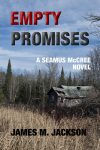 James M. Jackson authors the Seamus McCree series consisting of five novels and one novella. Jim splits his time between the deep woods of Michigan’s Upper Peninsula and Georgia’s Lowcountry. He claims the moves between locations are weather-related, but others suggest they may have more to do with not overstaying his welcome. He is a member of International Thriller Writers and the past president of the 700+ member Guppy Chapter of Sisters in Crime.
James M. Jackson authors the Seamus McCree series consisting of five novels and one novella. Jim splits his time between the deep woods of Michigan’s Upper Peninsula and Georgia’s Lowcountry. He claims the moves between locations are weather-related, but others suggest they may have more to do with not overstaying his welcome. He is a member of International Thriller Writers and the past president of the 700+ member Guppy Chapter of Sisters in Crime.
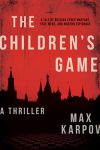 Max Karpov is the author of the new Russia thriller The Children’s Game. Karpov is the nom de plume of James Lilliefors, who also writes the Bowers and Hunter mystery series (The Psalmist, The Tempest), featuring Methodist pastor Luke Bowers and homicide detective (and agnostic) Amy Hunter. Karpov/Lilliefors is a native of the Washington, D.C. area. He currently lives with his wife in South Florida.
Max Karpov is the author of the new Russia thriller The Children’s Game. Karpov is the nom de plume of James Lilliefors, who also writes the Bowers and Hunter mystery series (The Psalmist, The Tempest), featuring Methodist pastor Luke Bowers and homicide detective (and agnostic) Amy Hunter. Karpov/Lilliefors is a native of the Washington, D.C. area. He currently lives with his wife in South Florida.
 After years in the theater, Elena Hartwell turned her dramatic skills to fiction. She writes the Eddie Shoes Mystery series. One Dead, Two to Go received four nominations for “best mystery of 2016.” Two Heads are Deader Than One launched April 15, 2017. InD’Tale’s five-star review: “…a delightful heroine in a story that promises pleasant romance and a hint of danger with a twist of an ending.” She can usually be found in the tiny town of North Bend, WA, with her hubby, their dog, two horses, and trio of cats.
After years in the theater, Elena Hartwell turned her dramatic skills to fiction. She writes the Eddie Shoes Mystery series. One Dead, Two to Go received four nominations for “best mystery of 2016.” Two Heads are Deader Than One launched April 15, 2017. InD’Tale’s five-star review: “…a delightful heroine in a story that promises pleasant romance and a hint of danger with a twist of an ending.” She can usually be found in the tiny town of North Bend, WA, with her hubby, their dog, two horses, and trio of cats.
 Ann Parker—science/corporate writer by day and crime fiction author by night—writes the award-winning Silver Rush historical series, featuring saloon-owner Inez Stannert, set in 1880s Colorado. The newest in the series, A DYING NOTE, brings Inez to the golden city of San Francisco, California, in 1881. Publishers Weekly calls this latest addition to the series “exuberant” adding that it “…brims with fascinating period details, flamboyant characters, and surprising plot twists.”
Ann Parker—science/corporate writer by day and crime fiction author by night—writes the award-winning Silver Rush historical series, featuring saloon-owner Inez Stannert, set in 1880s Colorado. The newest in the series, A DYING NOTE, brings Inez to the golden city of San Francisco, California, in 1881. Publishers Weekly calls this latest addition to the series “exuberant” adding that it “…brims with fascinating period details, flamboyant characters, and surprising plot twists.”
 Robert Blake Whitehill is a screenwriter and author of the award-winning, critically acclaimed, bestselling Ben Blackshaw Thrillers set on Smith Island in the Chesapeake Bay. He has written highly rated true crime TV for Discovery, including The New Detectives, as well as UXO (Unexploded Ordnance), a feature script that won Whitehill a fellowship from the Alfred P. Sloan Foundation.
Robert Blake Whitehill is a screenwriter and author of the award-winning, critically acclaimed, bestselling Ben Blackshaw Thrillers set on Smith Island in the Chesapeake Bay. He has written highly rated true crime TV for Discovery, including The New Detectives, as well as UXO (Unexploded Ordnance), a feature script that won Whitehill a fellowship from the Alfred P. Sloan Foundation.
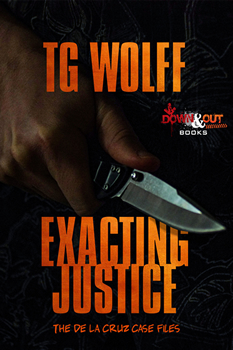 TG Wolff writes thrillers and mysteries that play within the gray area between good and bad, right and wrong. Cause and effect drive the stories, drawing from 20+ years’ experience in Civil Engineering, where “cause” is more often a symptom of a bigger, more challenging problem. Diverse characters mirror the complexities of real life and real people, balanced with a healthy dose of entertainment. TG Wolff holds a Master’s Degree in Civil Engineering and is a member of Mystery Writers of America and Sisters in Crime.
TG Wolff writes thrillers and mysteries that play within the gray area between good and bad, right and wrong. Cause and effect drive the stories, drawing from 20+ years’ experience in Civil Engineering, where “cause” is more often a symptom of a bigger, more challenging problem. Diverse characters mirror the complexities of real life and real people, balanced with a healthy dose of entertainment. TG Wolff holds a Master’s Degree in Civil Engineering and is a member of Mystery Writers of America and Sisters in Crime.
 Peter Beck studied Psychology, Philosophy and Economics in Bern, where he also gained a doctorate in Psychology. He did his military service as a cyclist in the Swiss Army and has a black belt in judo. Having done an MBA in Manchester, UK, he went on to become an executive board member of a large Swiss company and sat on several non-executive boards. Today he is his own boss and divides his time between writing the Tom Winter thrillers and supporting businesses in shaping their culture, organization and strategy. He is fluent in English. His thriller DAMNATION (2018) was originally published in German (Emons Verlag, 2013), has now been translated by Jamie Bulloch and is brought to you by Point Blank, an imprint of Oneworld, twice winner of the Man Booker Prize.
Peter Beck studied Psychology, Philosophy and Economics in Bern, where he also gained a doctorate in Psychology. He did his military service as a cyclist in the Swiss Army and has a black belt in judo. Having done an MBA in Manchester, UK, he went on to become an executive board member of a large Swiss company and sat on several non-executive boards. Today he is his own boss and divides his time between writing the Tom Winter thrillers and supporting businesses in shaping their culture, organization and strategy. He is fluent in English. His thriller DAMNATION (2018) was originally published in German (Emons Verlag, 2013), has now been translated by Jamie Bulloch and is brought to you by Point Blank, an imprint of Oneworld, twice winner of the Man Booker Prize.
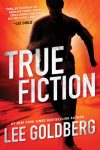 Lee Goldberg is a two-time Edgar & two-time Shamus Award nominee and the #1 New York Times bestselling author of over thirty novels, including the fifteen Monk mysteries and the internationally bestselling Fox & O’Hare books (The Heist, The Chase, The Job, The Scam, The Pursuit) co-written with Janet Evanovich. He’s also written and/or produced scores of TV shows, including Diagnosis Murder, SeaQuest, Monk, and The Glades. As an international television consultant, he has advised networks and studios in Canada, France, Germany, Spain, China, Sweden, and the Netherlands on the creation, writing and production of episodic television series. He recently founded, with author Joel Goldman, the publishing company Brash Books.
Lee Goldberg is a two-time Edgar & two-time Shamus Award nominee and the #1 New York Times bestselling author of over thirty novels, including the fifteen Monk mysteries and the internationally bestselling Fox & O’Hare books (The Heist, The Chase, The Job, The Scam, The Pursuit) co-written with Janet Evanovich. He’s also written and/or produced scores of TV shows, including Diagnosis Murder, SeaQuest, Monk, and The Glades. As an international television consultant, he has advised networks and studios in Canada, France, Germany, Spain, China, Sweden, and the Netherlands on the creation, writing and production of episodic television series. He recently founded, with author Joel Goldman, the publishing company Brash Books.
 Martin Roy Hill is the author of the Linus Schag, NCIS, thrillers, the Peter Brandt thrillers, and the award-winning short story collection DUTY, and EDEN: A Sci-Fi Novella. Martin’s short stories have appeared in Alfred Hitchcock Mystery Magazine, ALT HIST: The Journal of Historical Fiction and Alternative History, Mystery Weekly Magazine, Crimson Streets, Nebula Rift, Devolution Z, and others. A former national award-winning investigative journalist, Martin is now a military analyst.
Martin Roy Hill is the author of the Linus Schag, NCIS, thrillers, the Peter Brandt thrillers, and the award-winning short story collection DUTY, and EDEN: A Sci-Fi Novella. Martin’s short stories have appeared in Alfred Hitchcock Mystery Magazine, ALT HIST: The Journal of Historical Fiction and Alternative History, Mystery Weekly Magazine, Crimson Streets, Nebula Rift, Devolution Z, and others. A former national award-winning investigative journalist, Martin is now a military analyst.
- LAST GIRL MISSING with K.L. Murphy - July 25, 2024
- CHILD OF DUST with Yigal Zur - July 25, 2024
- THE RAVENWOOD CONSPIRACY with Michael Siverling - July 19, 2024
